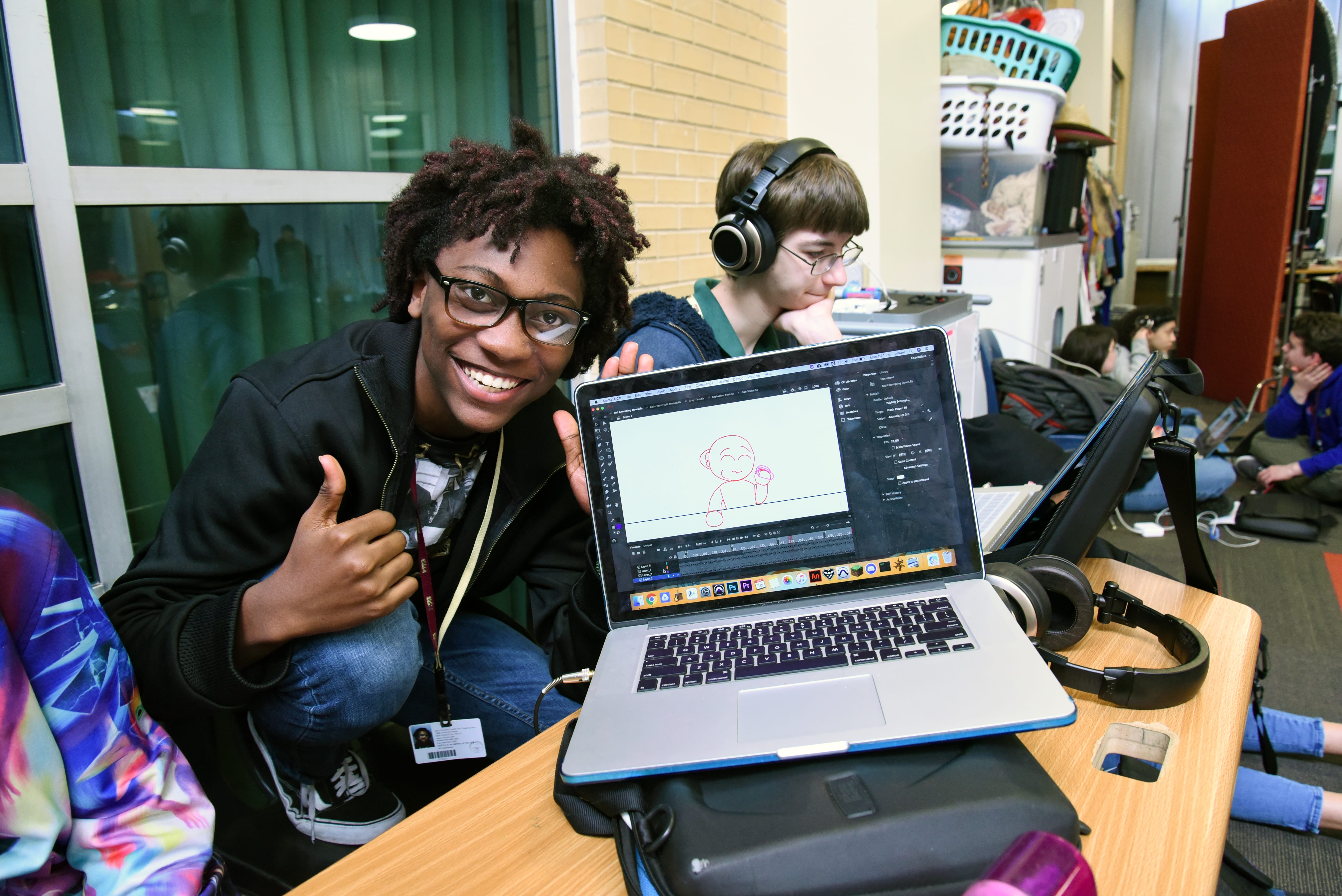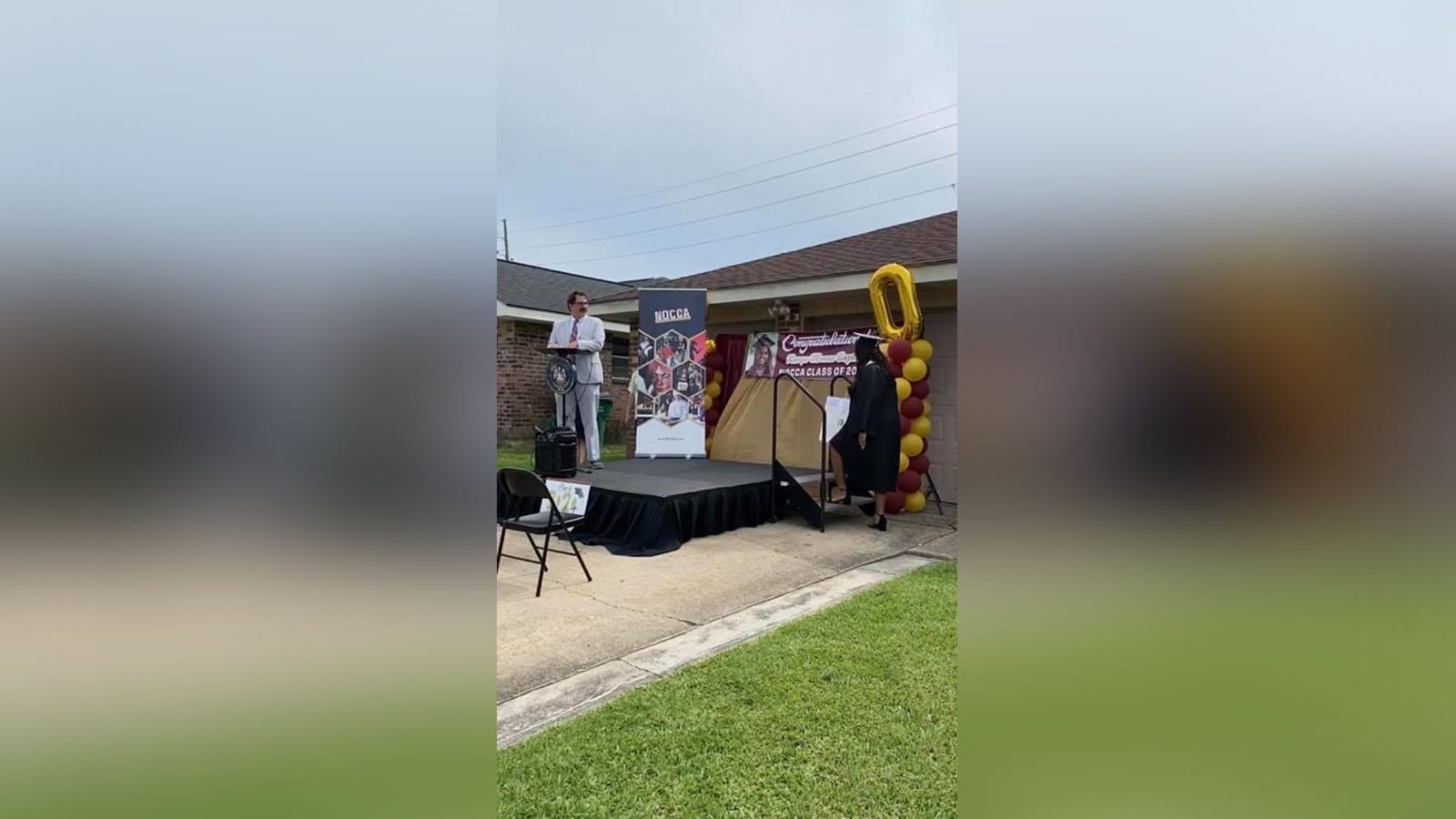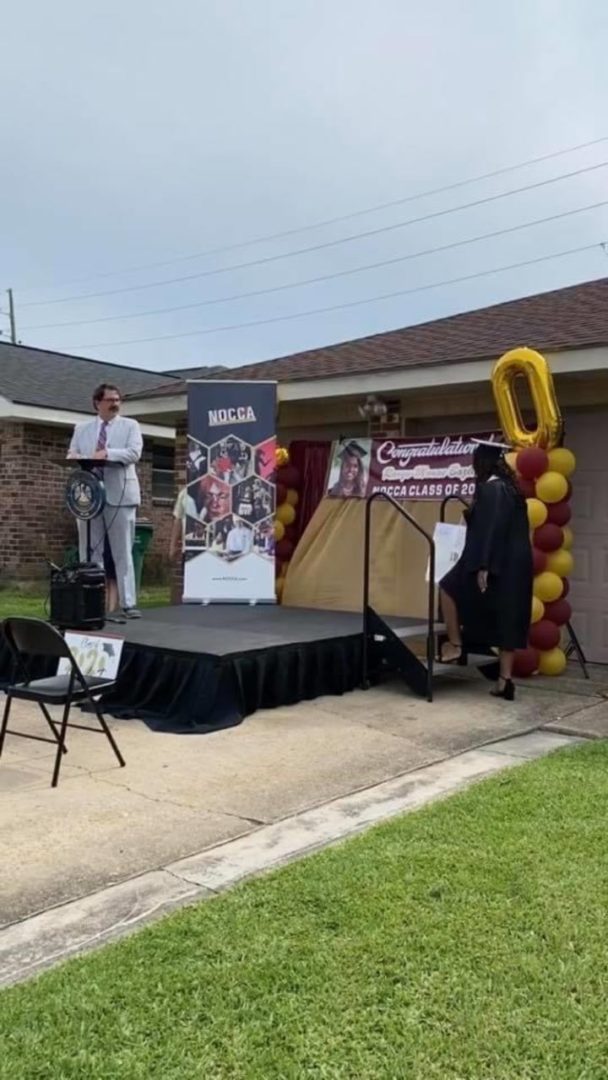When schools were forced to physically shut their doors back in March, every child and parent’s way of life changed. Teachers and administration everywhere had to scramble for solutions. All education was affected, with public and arts education hit hardest. Some students were given homework and expected to just complete the paperwork on their own and mail it back in. Some were given reading lists. Some had even less.
I spoke to several students and teachers at NOCCA (New Orleans Center for Creative Arts) about how they were able to implement swift and radical changes, successfully, in their curriculum. We discussed what has been done, what can be done and what should be done, concerning a potentially necessary move to digital arts education in the future.
Connecting Creatively
“It is a learning curve.”
“It is a learning curve. It happened so quickly.” Brian Hammell, Director of Communications and Campus Activities, told me. “Some of our arts disciplines are physical in nature. Like, dance. How do you manage an online dance class that is really connecting? We’re learning!”

18-year-old Isabella Hawley, class of ‘20, loves theater. She not only studied it at NOCCA, her mother is a local middle school theater teacher, so she was able to share opinions with me based on her and her classmates’ experiences as high school students, as well as her mother’s experiences as a teacher.
“The way we were taught theatre at NOCCA was very movement based, so the absence of the movement studio at school and having specific places that were meant for movement, that was difficult to deal with,” she said. “We would have sessions on Google Hangout and sometimes students couldn’t come to class, at all. One girl could only come occasionally, through her phone, with audio only and she couldn’t see anything and that’s very difficult when you’re teaching yoga and you have to mirror the teacher. The absence of equipment, for some, was a challenge too, but the drama department checked in with each of us to make sure we had what we needed and they were able to ship out certain things that students were lacking.”
https://www.instagram.com/p/B_VamdLFdZs/
Founded in 1973, the NOCCA school set up is an unusual one. It’s public, so anyone from Louisiana who passes the audition process can attend. Once they’re accepted, the admission fees are subsidized at a very low cost by the NOCCA institute, a nonprofit arm of the school that started out, many years ago, as a PTA, and grew into a massive foundation.
“Our full-day students, luckily, have laptops provided by our foundation. We are a public school supported by a nonprofit.” said Mr. Hammell. This universal access to laptops provided a necessary baseline for creating a “digital classroom” during the quarantine.
The administration and staff also had help from other schools that operate on a similar model. Being a part of the Arts Network, which includes other prestigious public arts schools around the U.S. like Laguardia in New York, Booker T. Washington in Texas and Orange County School of the Arts in California, meant that the schools had an open forum about what to do with these quick shifts and adjustments into online learning.
At-home learning
“I was already far into my portfolio [and college-bound] but we weren’t able to workshop with each other and that was a missing part.”
Vitoria Sana Perez, a U of Tampa-bound outgoing senior, and one of only 16 students in the whole country to receive the Gold Medal Portfolio and a $10,000 scholarship from Scholastic this year, took a moment out of her writing schedule to talk to me about the upsides and downsides of at-home learning.
“Especially for upper grades, online work can be beneficial,” she explained. “We have experience and tools. It’s not something that we’re strangers to. However, when you don’t have the physical presence of a teacher, there are issues with academic accountability. I was already far into my portfolio [and college-bound] but we weren’t able to workshop with each other and that was a missing part.”
Joseph Ceponis, a recording instructor in NOCCA’s Media Arts department, who founded his own studio, outside of the school as well, has always worked closely with his students, taking their music on the complete journey from a thought, to a recorded piece, to a physical album, which gets pressed at the end of each year by the New Orleans Record Press and, this year, was hand-delivered to graduates during mini backyard home graduation ceremonies.
Mr. Ceponis saw these new quarantine rules as a challenge, so he thought outside of the box to come up with an at-home plan.
“It was kind of a gradual shift for the Media Arts department,” he said. “First, we put together a skeleton staff to collect all of the gear from the school that we were able to distribute to the kids for at-home use. They were all well trained on it from earlier in the year, so it worked out pretty well and they had laptops, thankfully! Then, we split our students up into advisory groups. There were a lot of balls in the air. Their schedules were pretty fluid but we had a high retention rate within those small groups. Plus, The students are really brilliant. I’m so fortunate to work with an incredibly talented group of kids who have their eyes set on making exciting music.”
Mentoring and Motivating
“It isn’t just about the homework either … We have to monitor the students’ well-being.”
A trend appeared, that the particular situation of students, sitting in a designated classroom space, with a professor who watches them, assessing their attention and progress in real time, is a crucial part of the learning. Distraction seems to be one of the big elements that’s getting lost in translation with digital schooling.
“A big thing was getting the motivation to do class, especially with classes that were hard, physically, and took a lot to do, like suzuki– it sucks to do,” Isabella said. “It’s a necessary evil for developing your skills but when you’re at home, why have a necessary evil when you can just chill out?!”
Luckily, for the Media Arts department, at least, there were some solutions.
“Our students were able to mostly work on their own because they were engaged in the projects but we had to regularly check in,” Ceponis said. “They were taking skills they’ve learned here, borrowing gear and bringing it home, recording their ideas and emailing the recordings back to us. Then, [with their input], we’d mix it and add to it and beautify it in a professional way.
https://www.instagram.com/p/CBLfmbopEhO/
He then took a pause to consider the possibility that online class work might become a necessary part of the future. “Next year,” he said, “It’s going to be a very interesting process, as far as the equity, and getting the right gear to the right students in order to ensure that that year’s record, even if it is remote, can still have the same quality.”
It seems like NOCCA is focused on quality. Quality of the final product, quality of the time spent with students and quality of the students’ individual lives.
“With the new shift, teachers were able to jump on Google hangout meetings with students, sometimes in small groups, sometimes one on one, and talk about the assignments, evaluate their progress,” Hammell said. “One teacher can’t get to every student but when you divide it up amongst your team, it’s doable.
“It isn’t just about the homework either,” he continued. “We have to monitor the students’ well-being. How are they handling this stressful situation? What is the home environment? What are their needs? We had some students that faced the need for wireless and we actually have hot spots here that were able to be checked out from the library. Our teachers were really the front-line advocates with these communication channels.”
Due to hands-on advocacy from the teachers and extra funding for supplies, NOCCA was able to create a blueprint for how distance arts learning might work in the future.
“Before the fall semester, we’ll look back and say, ‘This part of the Media Arts program worked really well online, so let’s see if we can continue it,” Hammell said. “Lets see if we can expand it and even reach more students with online classes.”
The faculty and students at NOCCA left me with hope that solutions, and maybe even improvements, might come out of these necessary changes in the way we teach and learn.
If you’d like to read more about Vitoria Sana Perez and her portfolio, “So Seeks My Soul,” where she delves into her personal experiences with her family, Muslim religion, Filipino and Afghan ethnicity, you can do so here.
To view the Media Arts department website, based around the students’ individual art accomplishments, click here. To play the songs that were created for the senior record, go to SoundCloud.
To donate to the NOCCA Institution or get involved, click here.








